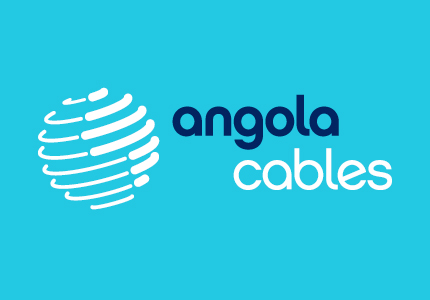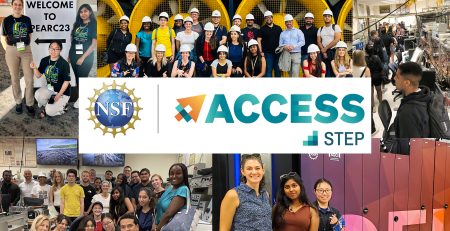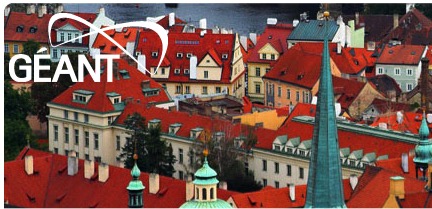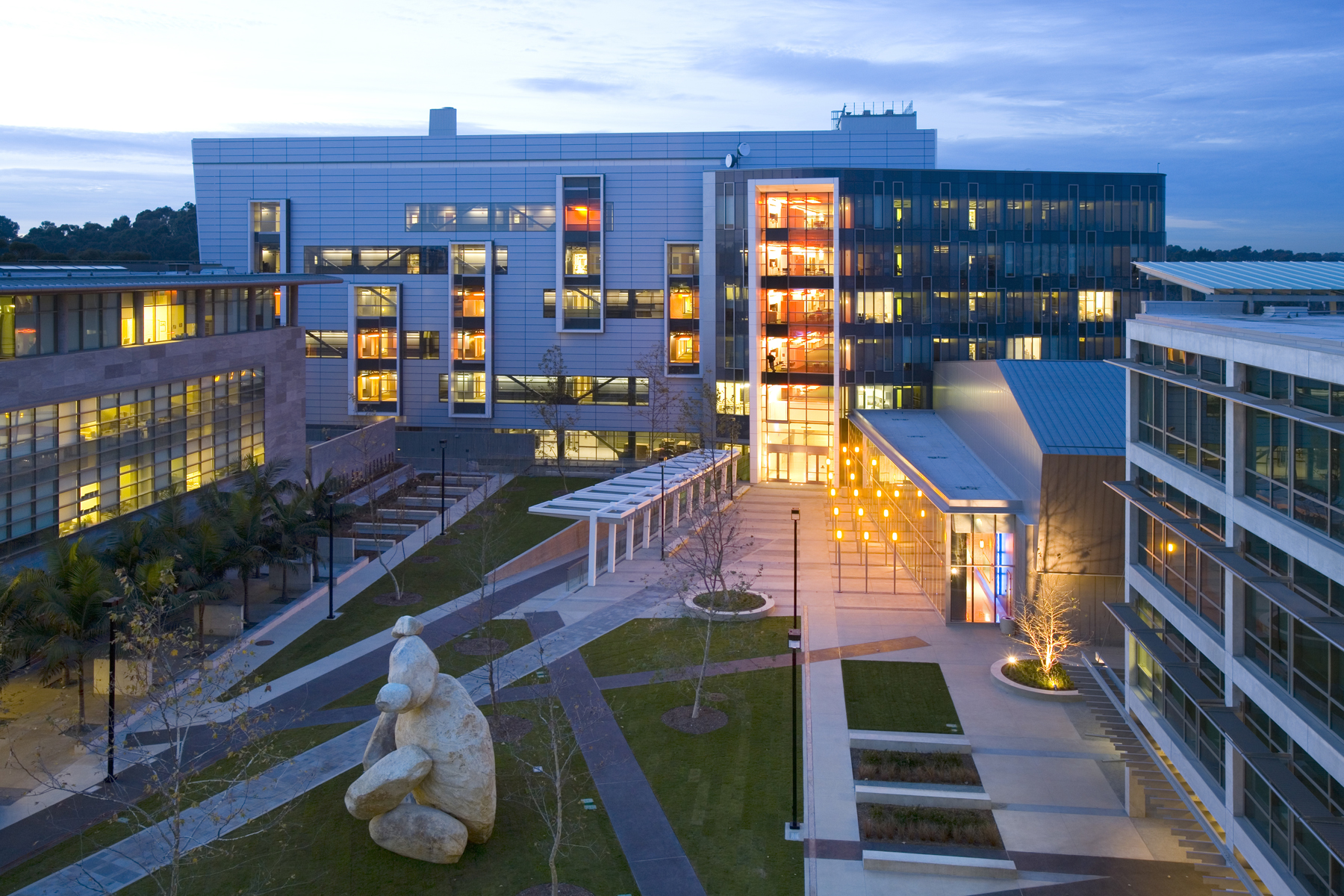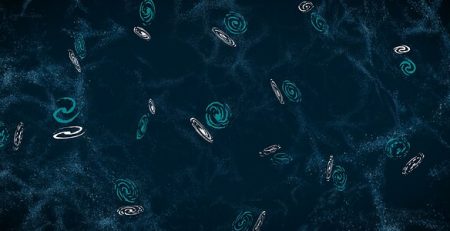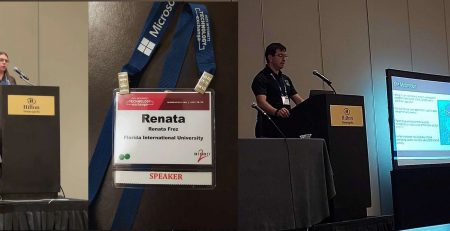Angola Cables & Americas Lightpaths Consortium Sign Memorandum of Understanding; Infrastructure for Research and Education


PRESS RELEASEMedia Contact:
For Angola Cables, SA: Antonio Costa, Head of Marketing
Tlm +244 927 686 279
antonio.costa@angolacables.co.ao
www.angolacables.co.ao
Lote Cellwave, 2ºandar
Via AL5, Zona XR6B – Talatona
Luanda Sul – Angola
For FIU: Heidi Morgan, Director
Center for Internet Augmented Research and Assessment (CIARA)
Florida International University
Miami, FL 33199
305-348-2006
heidi@fiu.edu
Miami, Florida, April 1 , 2016 – Angola Cables, SA and Florida International University’s Center for Internet Augmented Research and Assessment (CIARA) are pleased to announce the signing of a memorandum of understanding (MOU) to jointly collaborate on the development of a next-generation Internet network for research and education between Africa, the U.S. and Latin America.The AmLight Consortium is a group of not-for-profit universities, state, national and regional research and education networks including the AmLight ExP (IRNC BACKBONE: Americas Lightpaths Express and Protect) NSF Award #ACI-1451018 who have come together to develop the AmLight Africa project. The AmLight Consortium provides submarine cable connectivity between Miami, FL and Fortaleza and Sao Paulo, Brazil as well as Santiago, Chile for research & education purposes. The AmLight Consortium needs connectivity in the furtherance of its research and educational goals, to promote the development of advanced network applications, content, and services between the US, Brazil and Angola and the rest of Africa.Angola Cables is a long distance operator based in Angola, managing, operating and maintaining its facilities in the West Africa Cable System (WACS) which is an undersea cable system linking Yzerfontein, in South Africa and Highbridge, in the United Kingdom. Angola Cables is constructing the South Atlantic Cable System (SACS), an undersea cable system linking Luanda, in Angola, and Fortaleza, in Brazil. Angola Cables is offering 33 GHz of optical spectrum in SACS and the MONET undersea cable system linking Santos and Fortaleza, in Brazil, and Boca Raton, Florida, in the Unites States of America, during a ten-year period, for usage restricted solely to research and education applications. This will create a new chapter in research and education between the people of Angola, Brazil, and the U.S. as well as between the Americas and Africa as never before, restricted solely to research and education applications.The major goal of the MOU between Angola Cables and the AmLight Consortium is to link the researchers, students, knowledge creation, and knowledge sharing communities of the the nations of Africa, the US, Brazil, and other Latin American countries towards building effective multi-institutional research collaborations. The FIU AmLight Consortium Principal Investigator, Dr. Julio Ibarra, said,” This is the first step to provide a bridge from the current infrastructure, to one that will provide access to information abundance and unprecedented resources for research and education communities.” Antonio Nunes, CEO of Angola Cables said, “The new research and education infrastructure will enable research and education amongst the people of Africa and the Americas through the operation of production network infrastructure for communication and collaboration. This is one of the purposes of SACS, our main project, to give people the opportunity to share ideas and knowledge and improve social and economic development.”Plans are underway to interconnect the research and education communities of the U.S. and Africa by establishing a high-performance network link between the AMPATH International Exchange Point in Miami, and Angonix, a nascent exchange point in Luanda, Angola as well as fostering the development of emerging international exchange points in Fortaleza, Brazil. This infrastructure will connect with the Atlantic Wave-Software Defined Exchange (SDX) in Sao Paulo, Miami, Boca Raton, and Atlanta, GA. The collaboration will work to provide efficient peering between National Research & Education Networks (NRENs) and communities of interest through a distributed open SDX model.
The AmLight Consortium partners include: Academic Network at São Paulo (ANSP: São Paulo, Brazil), Rede Nacional de Ensino e Pesquisa (RNP: Brazil), Association for Universities for Research in Astronomy (AURA, USA), Cooperación Latino Americana de Redes Avanzadas (RedCLARA: Latin America), Internet2 (USA), Red Universitaria Nacional (REUNA:Chile), Canadian Advanced Research and Education Network (CANARIE, Canada), the Florida Lambda Rail (FLR, USA) and Florida International University (AtlanticWave and AMPATH, USA).
Fostering the development of emerging international exchange points (IXPs) in Fortaleza and Luanda: In Fortaleza, RNP will operate a new open exchange point. This exchange point will support both the infrastructure to Luanda and Miami, as well as terrestrial and submarine links to the south, expected future connectivity to Europe, as well as additional newly planned intercontinental connectivity. In Luanda, Angola Cables is coordinating the establishment of a new open exchange point, the Angonix, as well as a national research and education network. The exchange point in Luanda is planning to connect to the EU, developing West African Regional Education Network, and with support from SANReN (South African Research Network) Competency Area (CA), will leverage some existing TENET resources to interconnect with both South Africa, and UbuntuNet.
About Angola Cables: Angola Cables is an Angolan telecommunications company founded in 2009, which operates in the wholesale market and whose core business is the commercialization of capacity in international circuits for voice and data through Submarine Cable Systems throughout the South Atlantic and Africa.
Angola Cables is responsible for the management and development of WACS (West Africa Cable System) proving carrier level services to operators in Angola and in Subsaharan region of the African continent, fast becoming one of the leading capacity providers in the region. It also operates the Angonix (Angolan IXP) in its data center in Luanda. Africa is today the fastest growing region of the internet penetration in the world. Angola Cables’s goal is to transform Angola into one of the telecommunication hubs in Africa. For more information visit www.angolacables.co.ao
About CIARA: Florida International University’s Center for Internet Augmented Research and Assessment (CIARA), in the Division of IT, has developed an international, high-performance research connection point in Miami, Florida, called AMPATH (AMericasPATH; www.ampath.net). AMPATH extends participation to underrepresented groups in Latin America and the Caribbean, in science and engineering research and education through the use of high-performance network connections. AMPATH is home to the Americas Lightpaths Express and Protect (AmLight-ExP) high-performance network links connecting Latin America to the U.S., funded by the National Science Foundation (NSF), award #ACI-1451018; and the AtlanticWave-SDX: NSF Award# ACI- 1451024, 2015-2020, IRNC: RXP: AtlanticWave-Software Defined Exchange: A Distributed Intercontinental Experimental Software Defined Exchange (SDX); (www.ciara.fiu.edu).
About ANSP: The Academic Network of São Paulo (ANSP) provides connectivity to the top R&E institutions, facilities and researchers in the State of São Paulo, Brazil, including the University of São Paulo, the largest research university in South America. ANSP directly connects to AmLight in Miami at 20G. ANSP also provides connectivity to Kyatera, a 9-city dark-fiber-based optical network infrastructure linking 20 research institutions in the state and a number of special infrastructure projects like GridUNESP, one of the largest computational clusters in Latin America, supporting interdisciplinary grid-based science (www.ansp.br).
About RNP: The Brazilian Education and Research Network (RNP), qualified as a Social Organization (OS) by the Brazilian government, is supervised by the Ministry of Science, Technology and Innovation (MCTI), and is maintained through the inter-ministerial RNP program, which also includes the Ministries of Education (MEC), Health (MS) and Culture (MinC). The first Internet provider in Brazil with national coverage, RNP operates a high-performance nationwide network, with points of presence in all 26 states and the national capital, providing service to over 1200 distinct locations. RNP’s more than four million users are making use of an advanced network infrastructure for communication, computation and experimentation, which contributes to the integration of the national systems of Science, Technology and Innovation, of Higher Education, of Health and of Culture (www.rnp.br/en).
About AURA: The Association of Universities for Research in Astronomy (AURA) is a consortium of 40 US institutions and 4 international affiliates that operates world-class astronomical observatories. AURA’s role is to establish, nurture, and promote public observatories and facilities that advance innovative astronomical research. In addition, AURA is deeply committed to public and educational outreach, and to diversity throughout the astronomical and scientific workforce. AURA carries out its role through its astronomical facilities (www.aura-astronomy.org).
About CLARA: CLARA, the Latin American Cooperation of Advanced Networks (Cooperación Latino Americana de Redes Avanzadas), is a non-profit organization whose members are the NRENs of Latin America, and which is in charge of the management, development and operation of RedCLARA as well as the coordination of Latin America’s research networking activities. RedCLARA directly connects to AmLight links in São Paulo, Santiago, Miami and Tijuana. Latin American NRENs connected to redCLARA: Argentina (Innova-Red), Brazil (RNP) ,Chile (REUNA), Colombia (RENATA), Costa Rica (RedCONARE), Ecuador (CEDIA), El Salvador (RAICES), Guatemala (RAGIE), México (CUDI), Panamá (RedCYT), Perú (RAAP), Uruguay (RAU) and Venezuela (REACCIUN) (www.redclara.net).
About Internet2: Internet2, U.S. national backbone network, peers with Latin American R&E networks over AtlanticWave and PacificWave, from multiple peering points. Internet2 comprises 252 U.S. universities, 82 leading corporations, 68 affiliate members, including government agencies, 41 regional and state education networks, and more than 65 national research and education networking partners representing over 100 countries (www.internet2.edu).
About REUNA (Chile): Red Universitaria Nacional, REUNA, provides a leading digital platform that articulates, connects, and fosters collaboration between those entities that based in Chile belong to the fields of science, education, and the Chilean local culture, connecting them to the rest of the world throughout innovating services. With over 20 years’ experience and currently made up of 31 institutions, REUNA’s digital platform covers 13 regions between the northern city of Arica and the southern city of Osorno (www.reuna.cl/en/).
About CANARIE (Canada): Canarie, Canada’s NREN, interconnects with U.S. R&E networks at PacificWave (Seattle), StarLight (Chicago), MANLAN (New York), and peers with Latin American NRENs over AtlanticWave and PacificWave. One million researchers, scientists, and students at nearly 2,000 Canadian institutions, including universities, colleges, research institutes, hospitals, and government laboratories have access to the CANARIE Network (www.canarie.ca).
About Florida LambdaRail: FLR is the regional optical network of Florida, formed as a consortium of the Florida’s research universities, to support their research and education mission. FLR operates a robust and scalable 1,540-mile 100G capable network that spans the state of Florida and provides members and affiliates with a cost effective, ultra-high speed, interconnected, broadband service delivery network.(www.flrnet.org).

